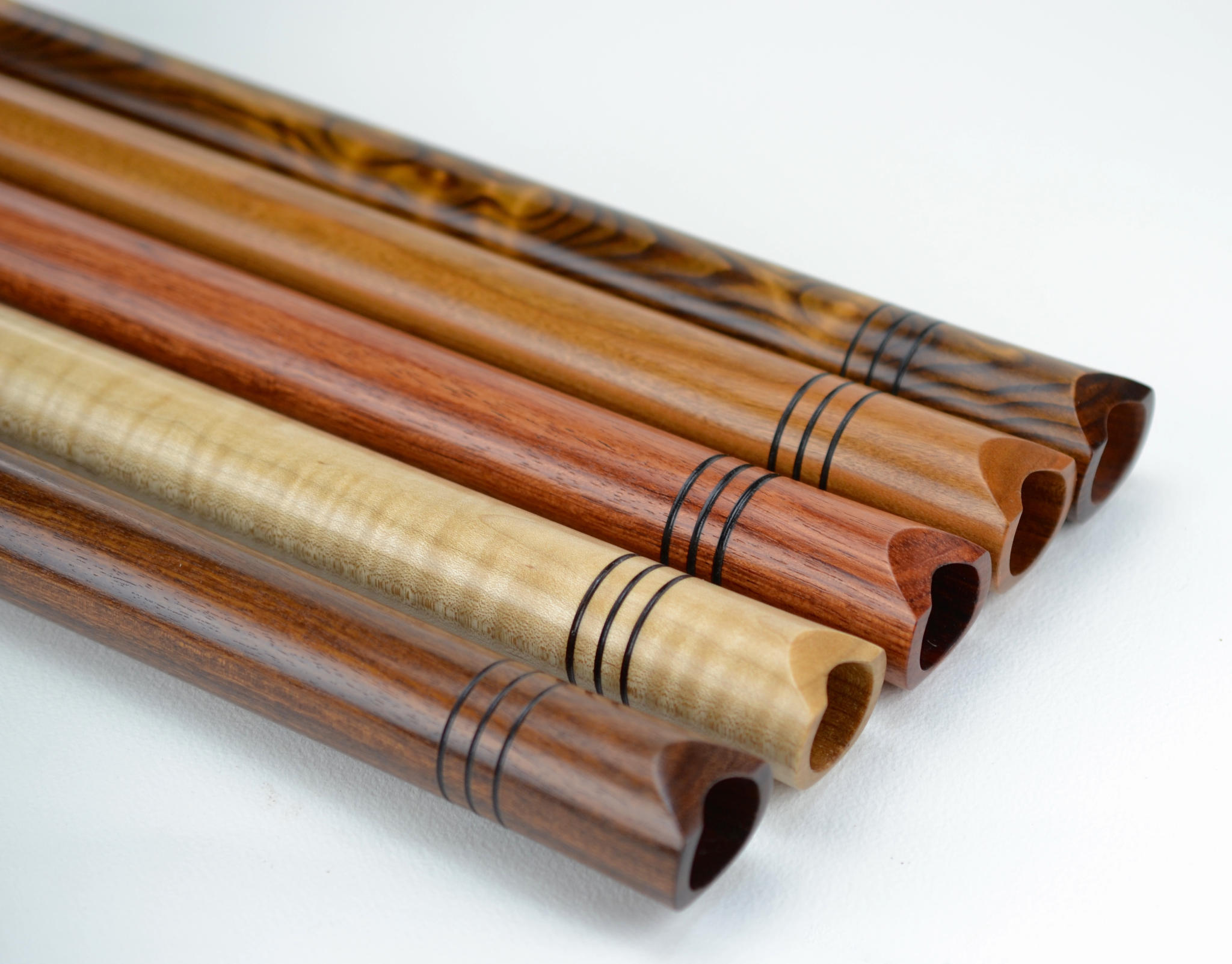

This line of flutes has had a few different names over the years. The original idea was to offer something that I was calling a modern interpretation of the flutes of the ancient Pueblo people of the Southwest. But I was never comfortable with that because it was too much of a stretch. My version bore almost no resemblance to the artifacts that were found in the Four Corners area. Those flutes had narrow bores, no blowing notch (they were likely played interdentally), and thinner walls. The only thing my new flutes had in common with them was the scale they played, and since I didn’t make them exclusively with that scale it seemed absurd to keep suggesting a connection between the present and past flutes.
So what to call them? Originally I called them “Anasazi” flutes, which is not only inaccurate (there were no “Anasazi” people–that was a Navajo word that was applied to them), but potentially offensive to the modern Pueblo area tribes. Later it was changed to Basketmaker Flutes, which was perhaps less offensive, but also misleading and probably not much better. So I was at a loss to describe these flutes that I was making, because they are probably closer in design to a shakuhachi than any artifact from the Four Corners area.
As a result, I’m now just calling them End Blown Flutes. It’s a bit generic, since it only describes the category of flute that they are, and not much else.
These versions (all except the lowest tunings) feature a thumb hole to allow for an extended scale. The standard tuning I use is a pentatonic major scale available in the keys of F#, G, Aflat, A, Bflat and B. There is a minor tuned version called the Mojave flute as well, available in different keys and varying from a 4-hole version to a 6-hole version. And I occasionally use exotic scales, such as the Magen Avot scale.
These instruments are considerably more difficult to play than a fipple flute (such as a whistle or a Native American style flute), and they represent one of the most satisfying challenges to the flute player. Do not expect to simply pick one up and start playing! Some players can get a tone right away, and others take more time. These flutes take time and patience to master, but they are well worth the effort.